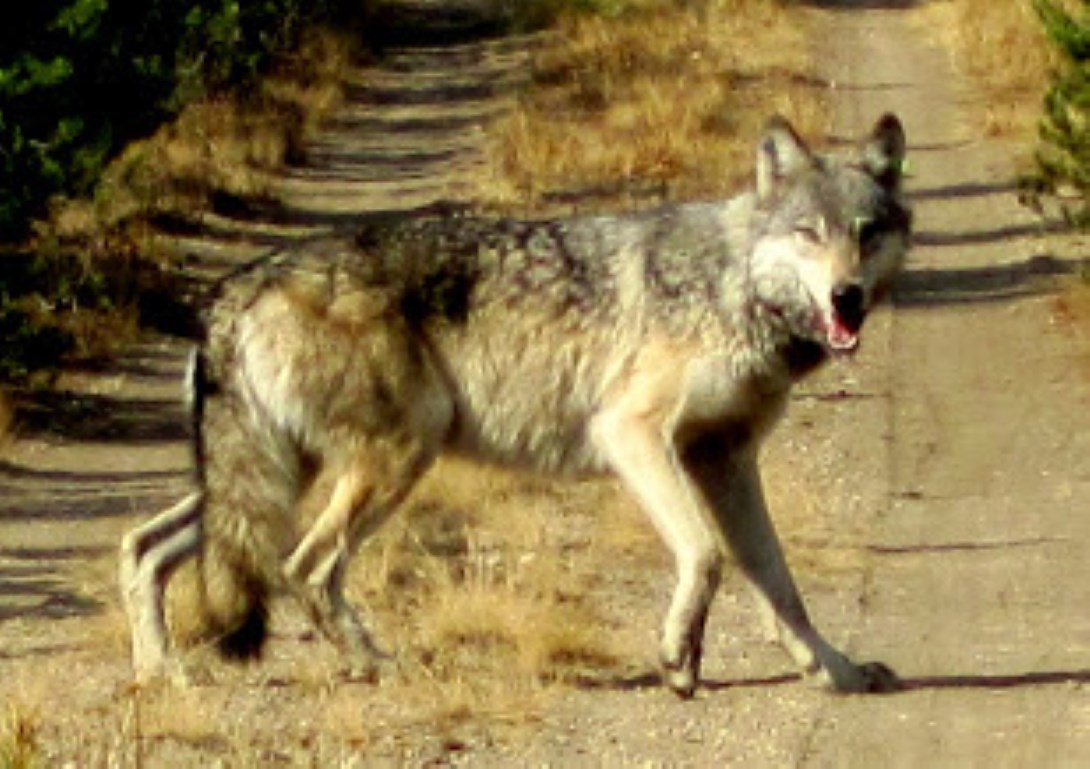Gray wolves are making a comeback in California after being wiped out nearly a century ago. The California Department of Fish and Wildlife (CDFW) has released a landmark report detailing ten years of wolf conservation and management efforts in the state.
The report, titled “Ten Years of Gray Wolf Conservation and Management in California: 2015-2024,” documents the journey of wolves returning to their historic range after being eliminated from the state by 1924 due to hunting and habitat loss.
Wolves naturally began returning to California in 2011 when a wolf named OR-7 crossed from Oregon, becoming the first confirmed wild wolf in the state in 87 years. The first wolf pups born in California in nearly a century were documented in 2015 with the establishment of the Shasta Pack.
“Since the wolves’ return CDFW has been monitoring the growing population working to mitigate wolf-livestock conflict and conducting significant outreach to livestock producers and the public,” said CDFW Director Charlton H. Bonham.
The report reveals that California’s wolf population has grown to at least 50 wolves by the end of 2024, organized into seven known packs with four additional areas showing wolf activity. Five of these packs met the definition of a “breeding pair” in 2024, indicating successful reproduction.
While most wolf packs are found in northeastern California, the Yowlumni pack has established territory in Tulare County in the southern Sierra Nevada, showing the species is gradually expanding its range.
The growing wolf population has created challenges, particularly for livestock producers. In 2024 alone, 58 livestock were killed by wolves, with an additional 15 animals confirmed killed or injured by wolves in early 2025. To address these conflicts, CDFW has awarded or approved $3.1 million in compensation to livestock producers for direct losses since 2022.
Similar Posts
In early June 2025, CDFW launched a pilot program to provide on-the-ground assistance and more aggressive non-lethal tools for ranchers to manage wolf interactions. These include rubber bullets and hazing techniques to move wolves away from conflict areas.
The report highlights significant research collaborations with University of California, Davis (The Wolf Project) and UC Berkeley (California Wolf Project). These partnerships study wolf diet, habitat use, relationships with other wildlife, and patterns of wolf-livestock conflict.
CDFW’s Wildlife Forensics Lab is creating a reference library of wolf genetic samples to determine wolf origins, relatedness, and even identify individual wolves through their DNA.
Early 2025 marked a significant milestone as California entered “Phase 2” of its wolf management plan after documenting at least four breeding wolf pairs for two consecutive years. This transition triggers a formal status review of gray wolves in California, which includes opportunities for tribal and public input to evaluate whether the state endangered listing remains warranted.
“The return of wolves to California is an epic tale and this report marks an important milestone in that story,” said Amaroq Weiss, a senior wolf advocate at the Center for Biological Diversity. “California’s decade of the wolf demonstrates that when essential legal protections are in place, there can be comeback stories for desperately imperilled animals.”
Beginning in 2026, CDFW plans to produce annual reports on wolf management, indicating a continued commitment to monitoring this recovering species. Wolves remain protected under both the California and federal Endangered Species Acts.
The report represents the delicate balance California faces between allowing a native species to return while addressing the concerns of communities affected by their presence, particularly livestock producers who experience both direct losses and stress on their herds.



















